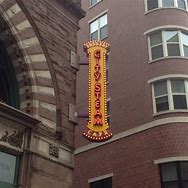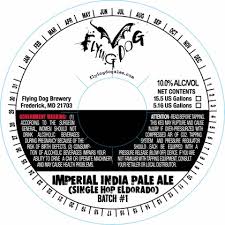
HARTFORD, CONNECTICUT
Located at the Marriott Hotel in downtown Hartford, CITY STEAM BREWERY (closed December ’24) may be the most versatile New England gastropub. On an overnight May ’12 jaunt, my wife and I (with dog, Roscoe, in tow) stayed across the river from the ‘Insurance Capital of the World’ in a cheaper East Hartford hotel, traversing the one-mile Founders Bridge to once more peruse one of Connecticut’s finest craft beer havens.
Tucked inside the bustling metropolis next to the Constitution State’s Science Center and the Victorian-styled Old State House Square and just a few blocks from Mortensen River Front Plaza, City Steam has been a haven for local citizens and curious visitors since the mid-‘90s.
Brewer Ron Page has become a staple at this capacious three-level post. A flourishing Main Street hotspot in the architecturally Romanesque Cheney Building, the exquisite wood-furnished interior of the multi-tiered structure features a prim upstairs supper lounge, basement-level Brew Ha-Ha Comedy Club and ground floor sportsbar (with separate right side dining area, City Steam beer banners, Hull’s Export wall plaques, exposed ducts and multiple TV’s). Two wood-carved City Steam Brewery Cafe tap handle platforms serve Page’s latest offerings. A covered side deck offers further seating.
Besides boasting a terrific array of Page’s hand-crafted elixirs, there are specialty drinks, fine wines, martinis, nicely priced appetizers and enticing salads and sandwiches available alongside tasty full course dinners. Stone baked pizza, char-broiled burgers and beef entrees top the menu.
Copper brew tanks are located behind the primary Z-shaped bar at the front window and the upscale casual cuisine goes well with the diversified beer selections.
During my initial October ’05 visit, my family sat at the upstairs lounge for lunch as Big Band music played in the background.
The wide ranging beer assortment included light Belgian White ‘clone’ White Rabbit (with its spritz-y lemon-grapefruit tartness and grassy backdrop), fizzy grapefruit-embittered, corn-husked, light-bodied Colt 46, caramelized, crystal-malted, Fuggle-hopped City Steam Ale, butterscotch-honeyed, citric-softened Export Golden Lager, and dry tea-like, fig-dashed Naughty Nurse English Pale Ale.
Mild barley-roasted, black chocolate-soured, silken-spiced, coffee-finishing Poor Richard’s Porter and Scotch-tinged, peat-smoked, Band-Aid-tongued, honey-dripped, tobacco-dried The Flowers Of Edinburg suited more experimental tastes.
Highly recommended were bitterly high-hopped, red-fruited, floral-spiced, smoke-dashed Vampire Ale and delicately exquisite French-styled Biere De Garde – a creamy Scotch-licked cognac-warmed vanilla-maple-doused conqueror.
During March ’09 sojourn, met respected brewer Ron Page at ground level café. Enjoyed buttery, pine-hopped, tropical-fruited, orange-peeled, currant-embittered Carpenter’s Ale (with its tertiary apple-pear-nectarine illusions) first. Next, light-bodied, grassy-hopped, wood-dried, floral-fruited, perfume-tinged City Steam Export and fig-sugared, gourd-backed City Steam Dark Lager sufficed.
Black coffee-embittered, charcoal-ashen, black tea-sashayed, raisin-dashed Dierdre Does Dublin Irish Dry Stout maintained an aggressive hop char.
Best bet: dried-fruited, cocoa-buttered, vanilla-doused, macadamia-etched, banana taffy-finishing Hoopla Bock.
During sunny May ’10 afternoon jaunt, discovered five more City Steam faves. Peppery-hopped, floral-hazed, honey-glazed, lemon-candied Blonde Lager, bitterly pine-hopped, grapefruit-peeled, lemon-dried, herbal-honeyed, apricot-soured Acapulco Gold American IPA, and banana-clove-sweetened, lemon-herbed, German-styled Luscious Wheat set the table for complex Princess Of Darkness Dark Belgian-Style Ale, a convincing banana-bruised, apple-grape-prune-soured, Merlot-Chardonnay-burgundy-wined nightcap with stove-burnt coffee reminder.
On the dark side were chocolate-y cocoa-chalked, walnut-roasted, hazelnut-toasted City Steam Summer Stout and the more robust Baltic Imperial-styled Pugnacious Porter, a chocolate-sweet after dinner treat with dry coffee roast soaking pureed black cherry, maple oats, vanilla, and anise illusions.
During lunchtime break between daughter Nicki’s college tour of University of Connecticut (to the North) as well as Quinnipiac and Albertus Magnus (to the South), had the opportunity to revisit Goliath-sized microbrewery, August ’10. Pine-lacquered, perfume-hopped, cereal-grained Export Golden Lager retained lemony grapefruit tartness and went beyond mere stylistic alacrity. Better still, alcohol-smitten ‘experimental Belgian-styled IPA,’ Busted In Brussels, brought buttery dry-smoked Scotch malting to orange-spiced oaken cherry tartness and tertiary peach-pear fruiting.
After April ’12 Easter Sunday in Danbury, I woke up on a breezy Monday to journey once more to City Steam. This time I quaffed six previously untried brews while chomping on nacho platter with wife at ground level bar ’round noon.
On the light side, White Wedding, an unfiltered Belgian-styled witbier, retained a citric-fizzed lemon spritz, recessive banana-clove sweetness and mild white-black peppering. Light in appearance but not in flavor, bold Blonde On Blonde American Pale Ale could be mistaken for a brisk IPA with its lemony grapefruit-peeled bittering, resinous piney bark dryness, sneaky juniper hop prickle and humble peach-apple-pear conflux.
Strangely less bitter than the aforementioned pale ale, approachable Innocence IPA had an English-styled earthen mossiness and dried fig mustiness deepening its caramel apple snip.
On the dark side were two fine choices. Black Silk Oatmeal Stout, with its coffee-burnt dark chocolate chalking, toasted oats-honeyed molasses sapping and setback walnut oiling, maintained a mild richness.
A barleywine-styled tribute to a Jazz master, Dexter Gordon English Strong Ale spread sweet whiskey, Belgian chocolate, black grape, black cherry, plum, bourbon, molasses and cola illusions atop coarse charcoal-singed hop charred bittering.
Following dinner during May ’12 half-hour stint, got a chance to sample previously untried Uncle Dunkel, a busy German dunkelweiss with sharp hop toasting contrasting sugary brown chocolate sweetness, banana-chipped fig spicing and raisin-breaded molasses buttering to its mossy peat bottom.
www.citysteambrewerycafe.com
For a great selection of craft beers, try West Hartford’s diminutive Harvest Fine Wine and Spirits. Found local brews such as Cottrell Perry’s Revenge, Great New London American Blonde Ale, New England 668 Neighbor Of The Beast and Narragansett Bock on April ’12 stopover.



